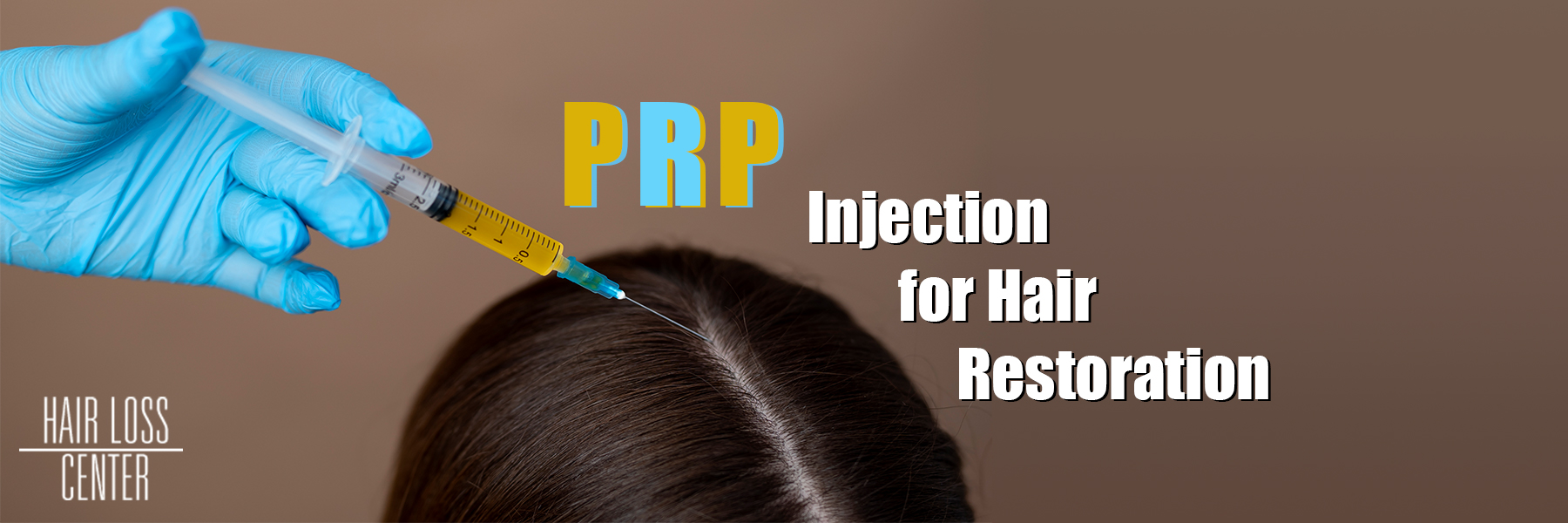
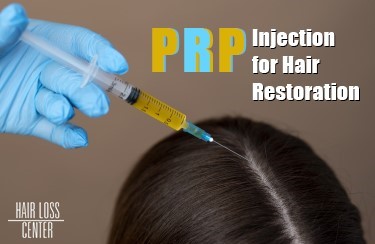
Considering PRP Injection for Hair Restoration? Here Is a Hair Loss Expert’s Guide on PRP Treatment
Platelet-rich plasma or PRP injection is a non-surgical hair restoration treatment for those who wish to have their thick and fine hair back.
It has become a popular therapy for hair loss because it’s mostly safe and natural in a way that it uses your own body platelet to stimulate the follicles. Of course, there are a few things to consider before starting PRP therapy.
So, today, we’ll discuss everything you should know about PRP injections, such as the science behind platelet rich plasma, how it is done, who can use it, potential side effects, and more. Spending a few minutes to read this simple guide will help you make an informed decision.
Looking for an easy instant solution to your hair loss? Get the best natural-looking European hair wigs at Newport Hair Loss Centers in Southern California.
Call for further information.
What Is PRP Injection?
Platelet rich plasma therapy is widely used nowadays by men and women to have fuller and thicker hair. Although the success rate depends on many factors, most patients have reported positive results and improvements in their hair density, thickness, and overall quality of the hair.
How Platelet Rich Plasma Can Cause Hair Growth?
Here is a bit of a science if you are wondering how PRP works.
The platelets and plasma are taken from the patient’s blood and then injected into the scalp. This procedure results in stimulating hair growth through different mechanisms, such as
- PRP contains hair growth factors, including platelet-derived growth factor (PDGF), transforming growth factor-beta (TGF-β), vascular endothelial growth factor (VEGF), and insulin-like growth factor (IGF). This not only stimulates the hair follicles on the scalp but also enhances tissue regeneration and the formation of new blood vessels (angiogenesis).
- PRP injection promotes the blood flow in the scalp (because of angiogenesis). More blood flow means more nutrients and oxygen that are necessary for hair growth.
- The growth factors can also activate dormant follicles. As a result, new hair strands will grow. Plus, they protect the existing follicles by nourishing them. This improves the lifespan of follicles, even the weakened ones.
- The anti-inflammatory properties of PRP reduce inflammation in the scalp. As inflammation can cause hair loss and prevent the natural hair growth cycle, this is another factor that plays a role in stimulating hair growth.
It’s good to know that PRP is not just used as a hair loss treatment. Different scientific studies have investigated its effects on knee osteoarthritis, tendinopathy, and other clinical applications. This shows that PRP is a perfectly scientific method and patients can trust it more easily.
What Happens During PRP Treatment?
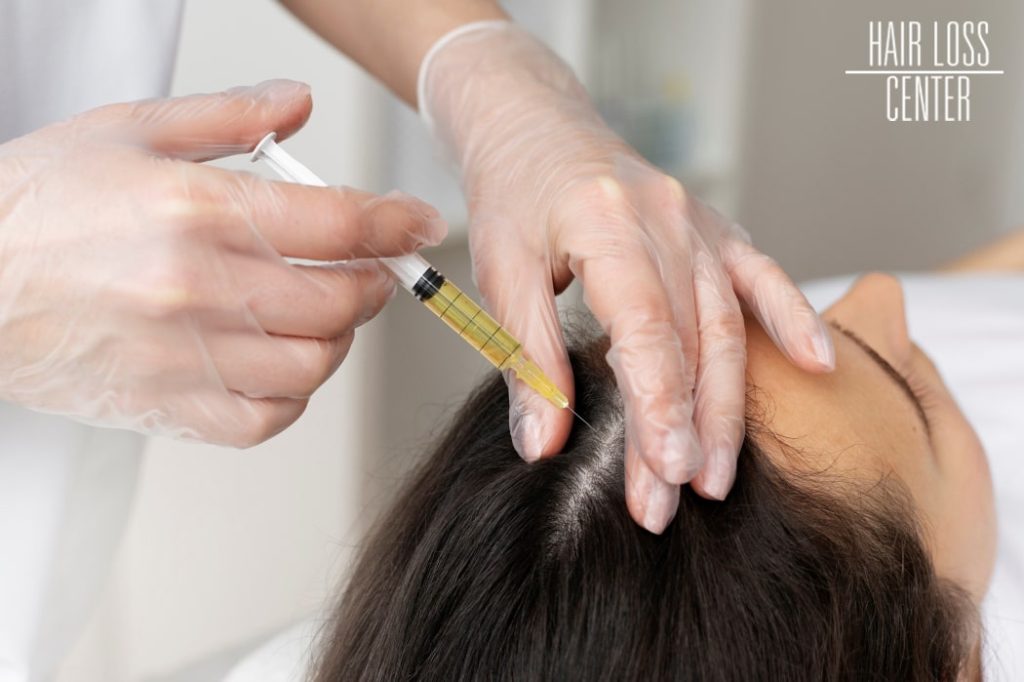
The first thing you need to do is consult with a dermatologist to find out more about what hair loss treatment options can work for your hair loss condition. Besides, your medical history should also be considered by the healthcare professional.
If the conclusion of the consultation session is that PRP injection is the way to go, your blood sample is collected to extract the platelets and plasma. This blood sample collection is like what happens during a simple blood test.
Then, your blood sample will be processed (centrifuged) to separate red blood cells, platelet-poor plasma, and platelet-rich plasma. The platelet rich plasma that is used in PRP injection contains 5 to 10 times more platelets than your normal blood.
Before the injection, you might need to get local anesthesia to reduce pain and discomfort during therapy. But it’s usually a personal choice.
When everything is ready, PRP is injected into different areas of the scalp where hair thinning has happened. This can take around 45 minutes but the exact duration depends on the number of injections the patient needs and some other factors.
While injection is the most common method, PRP can also be applied topically after microneedling. Microneedling means creating microchannels on the scalp with tiny needles to improve the absorption of platelets and growth factors.
Please note that, after injection, some patients experience dizziness and nausea.
PRP Post-Treatment Care, Side Effects, and Follow-Up Sessions
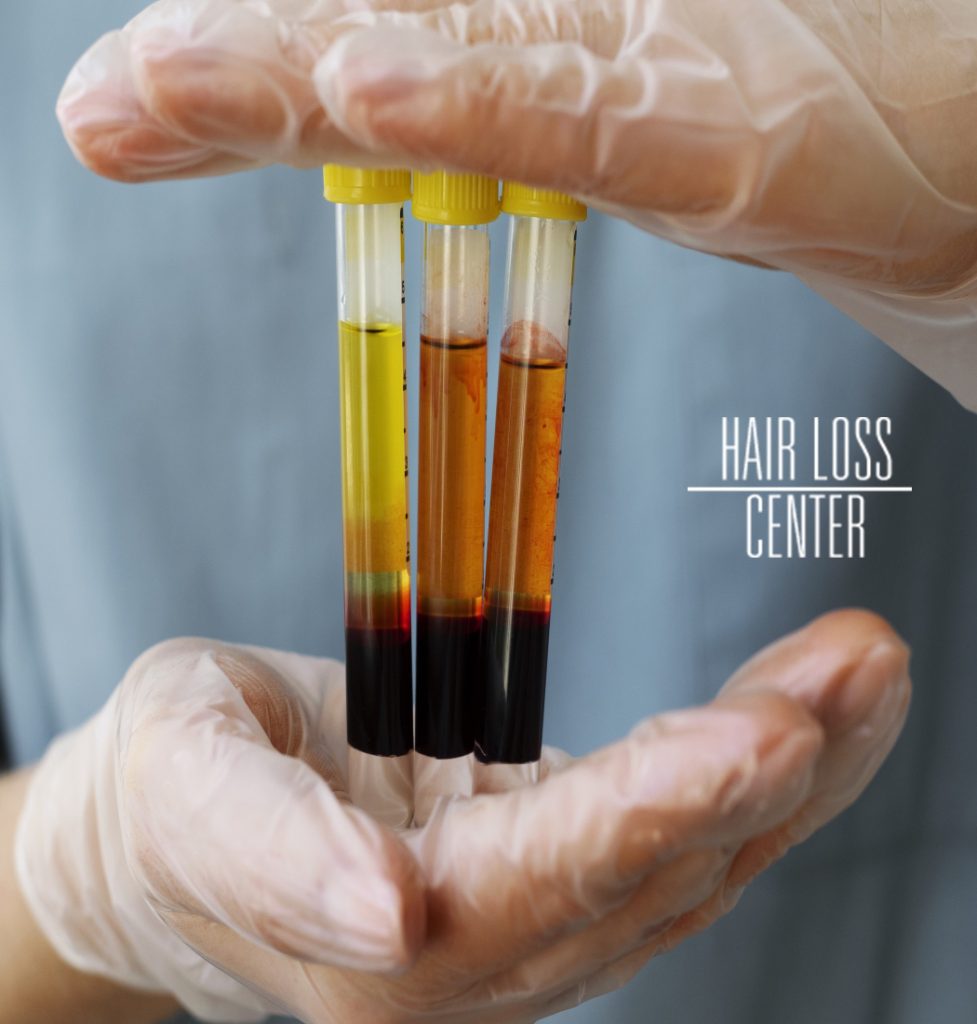
Typically, patients need multiple PRP therapy sessions that happen every several weeks. These follow-up sessions are necessary to achieve the best results and see improvements. The number of sessions and the timing are recommended by your dermatologist depending on your hair loss condition. So, stick to this schedule for an optimal result.
After each PRP session, mild swelling, redness, and discomfort in the scalp are normal. These side effects can last for a few hours up to a couple of days. However, following your healthcare professional’s recommendations for post-treatment care can minimize these minor problems.
PRP post-treatment instructions usually include the following guidelines.
- Don’t touch or wash your scalp for a minimum of 24 hours to let the PRP absorb well.
- Don’t use heat styling, harsh shampoos, conditioners, and other products that can irritate your scalp.
- Protect your scalp from direct sun exposure with a comfortable hat or scarf.
- Any activities that can lead to excessive sweating should be avoided for two days.
- Temporary hair shedding can happen after a few weeks which is a normal part of the process and you shouldn’t worry about it.
- If you experience unusual pain, excessive swelling and redness, and infection, inform your healthcare provider ASAP.
These instructions can be different for each patient.
How Long Does It Take for PRP Treatment to Work?
Again, it varies from patient to patient depending on the underlying cause of their hair loss, its severity, their physiological response to PRP hair treatment, the schedule and consistency of the therapy, etc.
Some may see improvements in their hair quality and thickness or reduced hair shedding only after a few months.
However, noticeable positive effects can happen over time and gradually improve. So, you need to be patient.
Call to schedule a free 30-minute private consultation session with our experts.
Who Should and Shouldn’t Use PRP Therapy for Hair Loss?
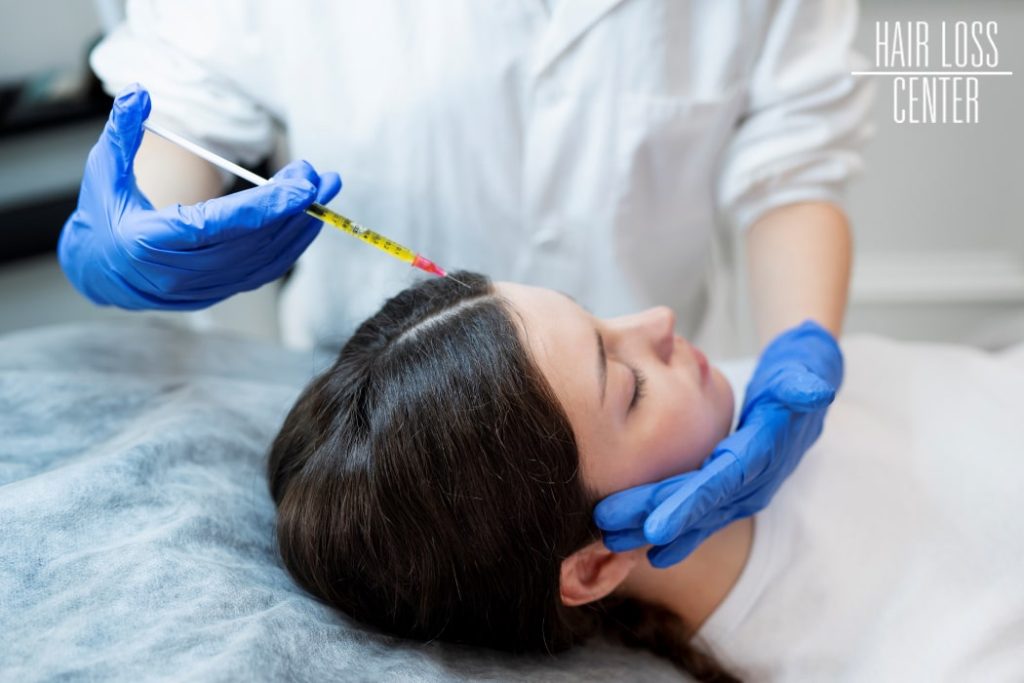
Platelet rich plasma injection is commonly recommended for men and women of different age groups who are suffering from androgenetic alopecia (male/female pattern baldness). But people with the following types of hair loss can also benefit from PRP hair treatment.
- Alopecia areata,
- Traction alopecia,
- And telogen effluvium hair loss.
On the other hand, some groups of people are not suitable candidates for this kind of hair restoration treatment. For example, people who
- have bleeding disorders or are taking blood-thinning medications.
- have active scalp infections.
- are suffering from skin or scalp conditions, like eczema, psoriasis, dermatitis, etc.
- are pregnant or they are breastfeeding.
- are undergoing chemotherapy or have active cancer.
Therefore, the consultation session before PRP therapy is necessary to make the best decision.
Some Alternative Hair Loss Treatments
If PRP is not a good option for you, don’t worry, there are some other hair loss treatments you can consider.
- Topical or oral medications and nutritional supplements
- Low-level laser therapy (LLLT)
- Hair transplantation
- Micropigmentation
- Hair care products and practices
- Natural hair wigs and hair pieces
FAQs about PRP for Hair Loss
Let’s answer some of your most common questions about PRP hair restoration therapy.
Is PRP Injection Expensive?
The exact PRP injection cost depends on a few factors, such as the number of sessions required. But each therapy session in the United States in 2024 costs something between $500 to $2500. So, PRP therapy is considered a relatively expensive treatment.
Is It Possible to Have an Allergic Reaction to PRP?
It’s extremely rare and unlikely because PRP only comes from your own blood.
Is There Any Risk of Scarring and Scalp Injury After PRP Injections?
The mild redness and swelling heal after a couple of days and there will be no scars. In very rare cases when the healthcare provider isn’t qualified, there is a risk of scalp injury.
Is There Anything I Can Do to Enhance the Results of PRP Treatment?
Yes. Some lifestyle factors can affect the results.
- Have a healthy and balanced diet.
- Manage your stress.
- Have regular but moderate exercise.
- Avoid damaging your hair and scalp with tight hairstyles, heat styling, harsh hair care products, etc.
- Keep your hair and scalp clean by washing it with a gentle shampoo.
- Use a gentle conditioner to keep your hair hydrated and healthy.
- Avoid smoking and drinking alcohol as much as possible.
- Sleep enough and well.
- Stick to your healthcare professional’s recommendations and instructions.
Should I Take Any Medications While Going Through PRP Therapy?
Most of the time, some topical medications are prescribed, including Minoxidil, Finasteride, and Ketoconazole shampoo. You might also need to take biotin supplements.
How Long After Each PRP Session Can I Go Back to My Normal Activities?
You can continue your daily routine immediately after injections. But you should avoid any heat (like sun exposure and heat styling), excessive sweating, heavy physical activities, and the like for two days.
My Hair Is Shedding Afte PRP Injection, What Should I Do?
Nothing! It’s part of the hair growth process and is commonly referred to as the shedding phase. You shouldn’t worry about it. It will stop after a couple of months and new healthy hair strands will grow.
Will PRP Treatment Be Effective for Me?
The answer depends on the cause and severity of your hair loss, your body’s response to this treatment, the PRP protocol, your lifestyle and adherence to the treatment schedule, and some other factors.
So, it’s not easy to predict how effective this hair loss treatment will be for any individual. However, we know in most cases, patients have noticed improvements after PRP therapy but the extent of these improvements is varied.
Natural-Looking Custom Human Hair Wigs in Los Angeles, Orange, and San Diego
Although PRP is a relatively safe method to restore your hair, it isn’t for everyone. It can be a bit costly and takes some time to work. So, many people who are experiencing temporary hair loss or need to cover their baldness during treatment may prefer to wear a wig.
Regardless of your condition, we offer custom-designed human hair wigs, toppers, and hair pieces for any type of hair loss, such as alopecia, hormonal hair loss, cancer, etc. You can also consult with our hair loss and wig experts for free to understand your options better and figure out what’s best for you.
Call 310-991-0087 in Los Angeles, 949-322-9555 in Orange, and 949-640-4247 in San Diego to schedule an appointment.
LA OFFICE
Beverly Hills
8383 Wilshire Blvd, Suite 800
Los Angeles, CA 90211
ORANGE COUNTY OFFICE
NEWPORT BEACH
240 Newport Center Drive, Suite 111
Newport Beach, CA 92660
SAN DIEGO OFFICE
LA JOLLA
4660 La Jolla Village Dr. Suite100
San Diego, CA 92122
NEWPORT HAIR LOSS CENTER
Newport Hair Loss Center gives hair loss sufferers a way to restore their appearance and boost their confidence, whether they are suffering from trichotillomania, alopecia, or are currently going through chemotherapy.
Site Map

